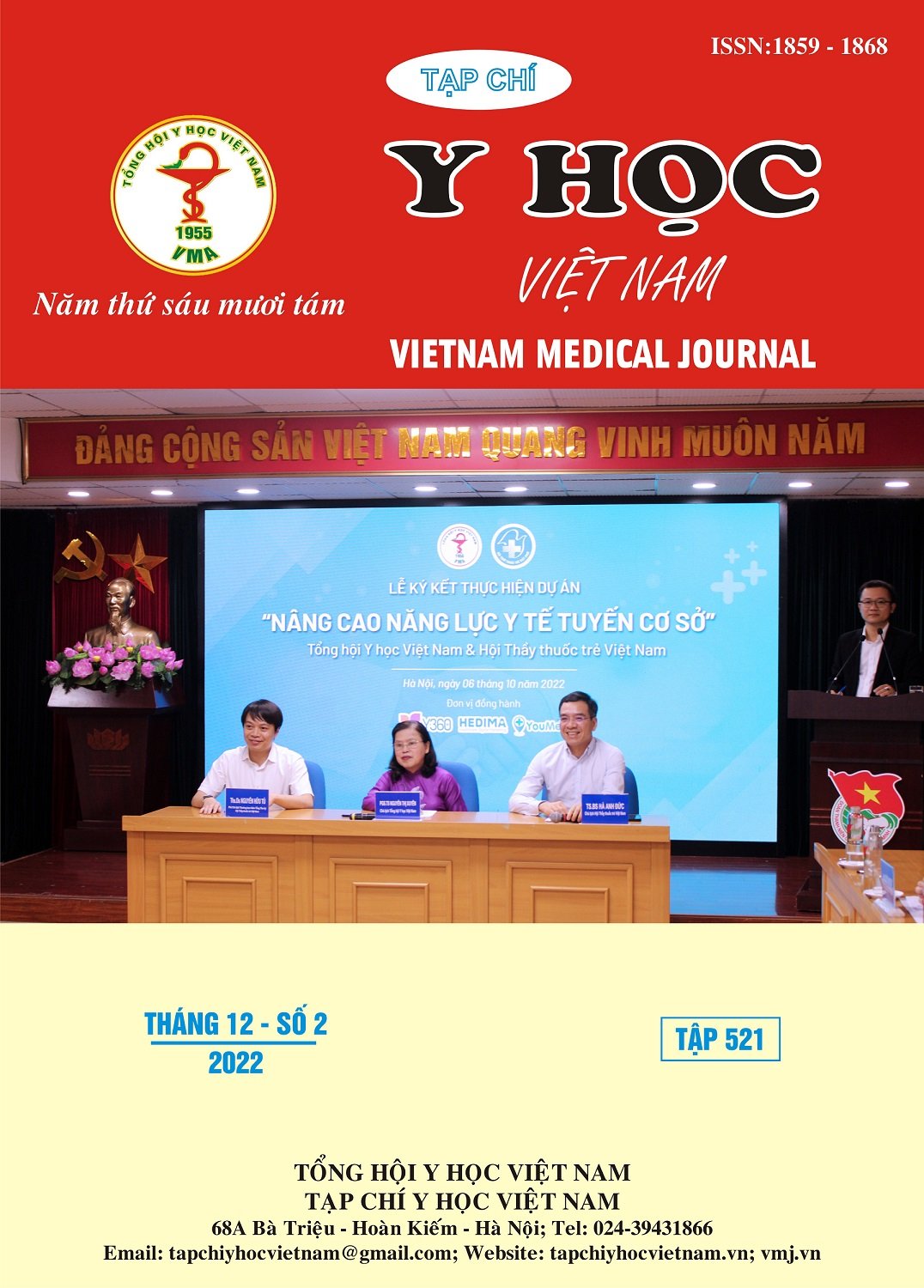INVESTIGATION OF THE LEFT VENTRICULAR ELASTANCE IN PATIENTS WITH STABLE ISCHEMIC HEART DISEASE
Main Article Content
Abstract
Objectives: To investigate the left ventricular end systolic elastance (Ees) and left ventricular end diastolic elastance (Ed) in patients with stable ischemic heart disease. Patients and methods: 129 patients with stable ischemic heart disease (IHD) (study group) and 40 individuals without IHD (control group) were enrolled. All patients with IHD underwent coronary artery stenting. Ees was calculated using echocardiography single beat method. Ed was calculated bythe formula (E/e’)/ SV (1/ml). Results: At baseline, patients with stable IHD had a lower Ees as compared with the individuals without stable IHD (3.87 (IQR: 2.88 – 4.97) vs 4.38 (IQR: 3.70 – 5.29) mmmHg/ml, p < 0.05)) while Ed were not different between two groups. Ees, Ed were associated to age, gender and heart failure. Ees in the heart failure groups ((2.59 (1.83 – 4.09) mmHg/ml) was lower than the non – heart failure groups (4.08 (3.17 – 5.26) mmHg/ml while Ed in the heart failure patients ((0,28 (0,19 – 0,39) 1/ml) was higher than the non – heart failure patients (0,24 (0,17 – 0,31) 1/ml. Ees was decreased while the functional NYHA class elevated (p < 0.05) but Ed were not. Conclusion: In conclusion, Ees which obtained from echocardiography increased decreased significantly in patients with stable ischemic heart disease. Ees, Ed was related to age and gender. Ees was associated with the heart failure and the functional NYHA class
Article Details
Keywords
left ventricular end systolic elastance, left ventricular diastolic elastance, stable ischemic heart disease.
References
2. Chen C. H., Fetics B., Nevo E., et al, "Noninvasive single-beat determination of left ventricular end-systolic elastance in humans," J Am Coll Cardiol, vol. 38(7), pp. 2028-34, 2001.
3. Antonini-Canterin F., Poli S. et al, "The Ventricular-Arterial Coupling: From Basic Pathophysiology to Clinical Application in the Echocardiography Laboratory," Journal of Cardiovascular Echography, vol. 23, no. 4, pp. 91-5, 2013.
4. Antonini-Canterin F, Enache R, Popescu BA, "Prognostic value of ventricular-arterial coupling and B-Type Natriuretic Peptide in patients after myocardial infarction: A five-year follow-up study," J Am Soc Echocardiogr, vol. 22, pp. 1239-45, 2009.
5. Her AY., Kim JY., Choi EY. et al (2009), "Value of ventricular stiffness index and ventriculoarterial interaction in patients with nonischemic dilated cardiomyopathy," Circ J, vol. 73, p. 1683–1690.
6. Margaret M. Redfield, MD; Steven J. Jacobsen, MD, PhD; Barry A. Borlaug, " Age- and gender-related ventricular–vascular stiffening: a community-based study," Circulation, vol. 112, p. 2254–62, 2005.
7. Capone C.A., Lamour JM. et al, "Ventricular Arterial Coupling: A Novel Echocardiographic Risk Factor for Disease Progression in Pediatric Dilated Cardiomyopathy," Pediatr Cardiol , vol. 40, pp. 330-338, 2019.
8. Ky B., French B., Khan A.M et al, "Ventricular-Arterial Coupling, Remodeling, and Prognosis in Chronic Heart Failure," JACC, vol. 62(13), p. 1165–72, 2013.


